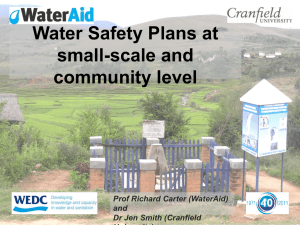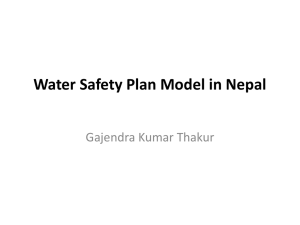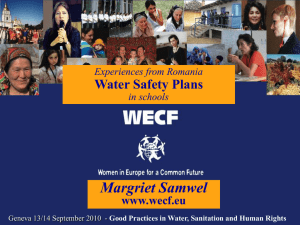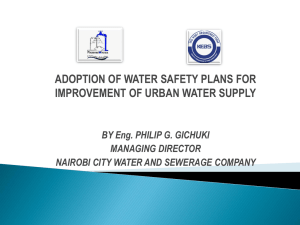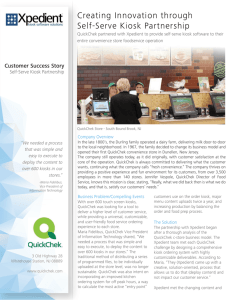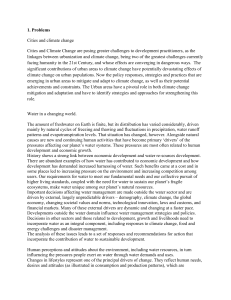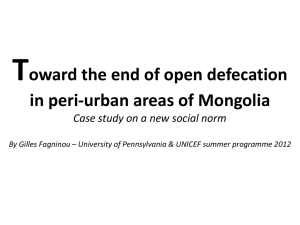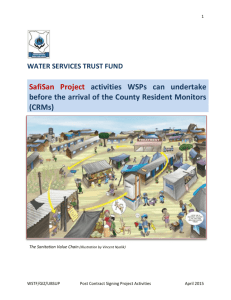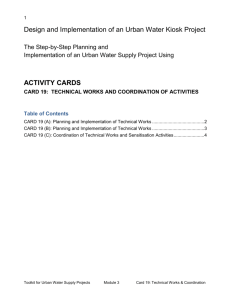Introduction, Selection of Project Areas
advertisement
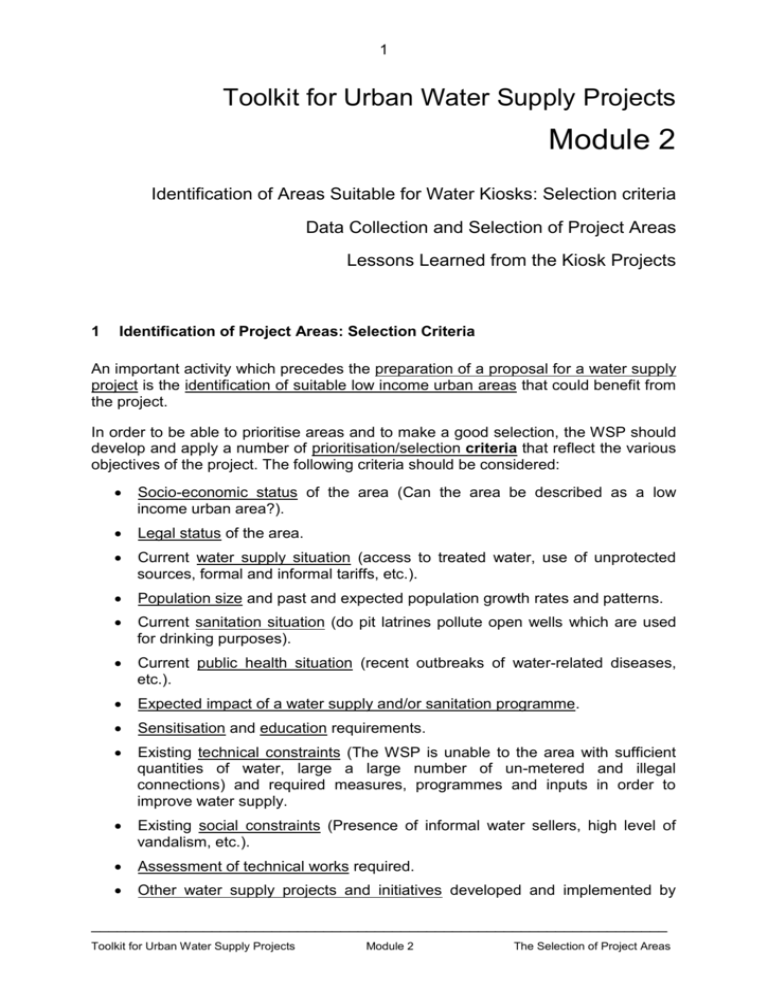
1 Toolkit for Urban Water Supply Projects Module 2 Identification of Areas Suitable for Water Kiosks: Selection criteria Data Collection and Selection of Project Areas Lessons Learned from the Kiosk Projects 1 Identification of Project Areas: Selection Criteria An important activity which precedes the preparation of a proposal for a water supply project is the identification of suitable low income urban areas that could benefit from the project. In order to be able to prioritise areas and to make a good selection, the WSP should develop and apply a number of prioritisation/selection criteria that reflect the various objectives of the project. The following criteria should be considered: Socio-economic status of the area (Can the area be described as a low income urban area?). Legal status of the area. Current water supply situation (access to treated water, use of unprotected sources, formal and informal tariffs, etc.). Population size and past and expected population growth rates and patterns. Current sanitation situation (do pit latrines pollute open wells which are used for drinking purposes). Current public health situation (recent outbreaks of water-related diseases, etc.). Expected impact of a water supply and/or sanitation programme. Sensitisation and education requirements. Existing technical constraints (The WSP is unable to the area with sufficient quantities of water, large a large number of un-metered and illegal connections) and required measures, programmes and inputs in order to improve water supply. Existing social constraints (Presence of informal water sellers, high level of vandalism, etc.). Assessment of technical works required. Other water supply projects and initiatives developed and implemented by ___________________________________________________________________ Toolkit for Urban Water Supply Projects Module 2 The Selection of Project Areas 2 local community-based organisations. 2 Community-based organisations which are active in the area. Expressed needs and the willingness and ability to pay for an improved service and a better product. Data Collection and Selection of Project Areas The collection of reliable data is at the basis of the successful water supply project. In order to achieve the social, public health, commercial and technical objectives of the WSP, the following types of data will have to be collected and analysed: Data concerning the legal status of the peri-urban areas considered. Demographic data, patterns of population growth and patterns of migration. Spatial developments (extension of the area and densification of the population). Data concerning current water consumption levels and patterns, the use of alternative (unprotected and protected) sources of water. Data on the current sanitary situation. Information on (registered) groups and organisations that (could) represent the community and an inventory of existing forms of community participation. On the basis of existing water consumption patterns and a detailed knowledge on alternative (cheaper) sources of water, a service provider is able to estimate per capita daily consumption levels and to make peri-urban water demand forecasts. The main objectives of the data collection exercise are the following: Enable to select the project areas using the selection criteria. Calculate the number of required kiosks (using the peri-urban kiosk system planning sheet, see Module 2, Section **). The objectives of the project and the collected data will also enable the project team or taskforce to identify a number of indicators that can be used to monitor and evaluate the project (both the approach and the outcome of the project). 3 Data Collection Tools This section contains a set of data collection tools which can be used to collect all the information required to: Prioritise project areas. Prepare a project proposal. Implement a water supply project. ___________________________________________________________________ Toolkit for Urban Water Supply Projects Module 2 The Selection of Project Areas
